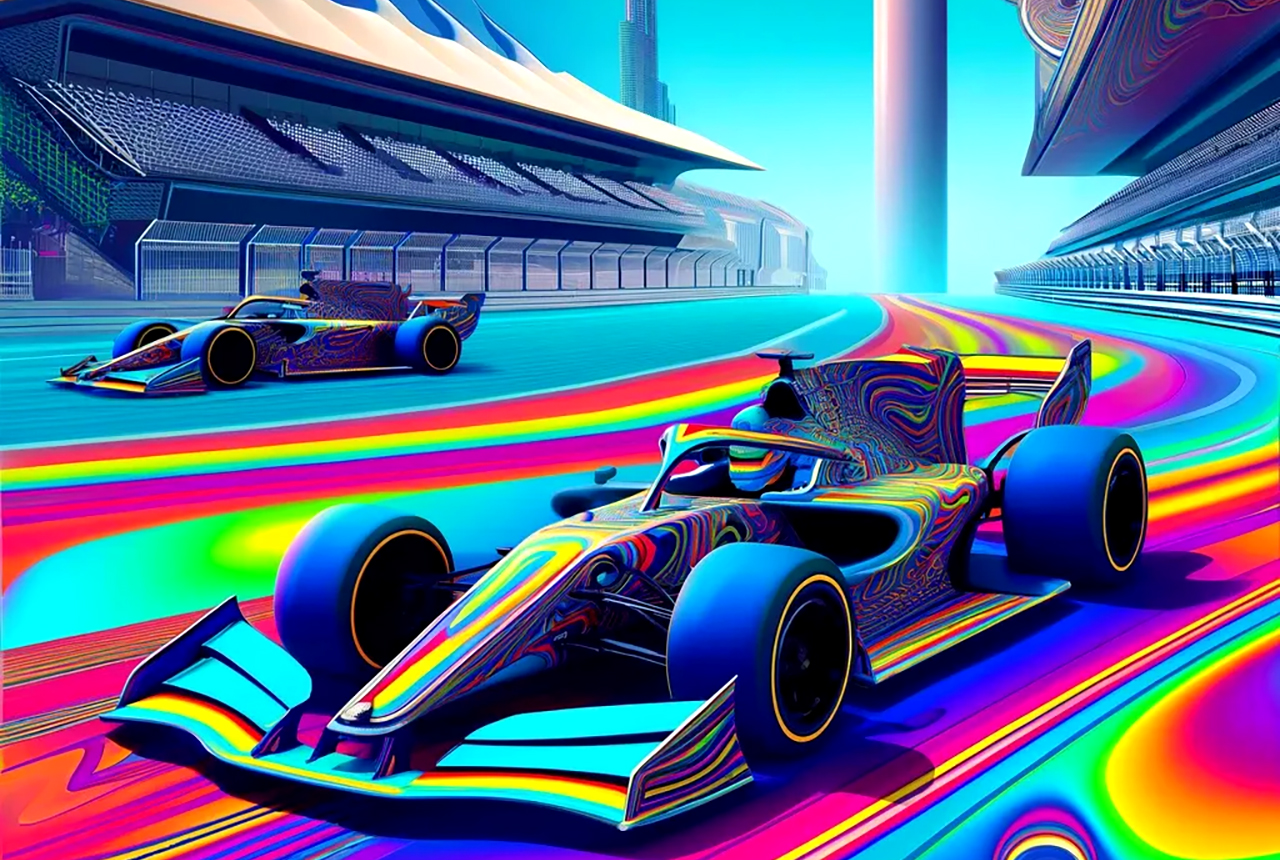style="font-weight: 400;">Autonomous Racing League sought to pioneer a new era of motorsport. There was not a single human driving anywhere on the track. It was an event poised to showcase the zenith of AI, but it unfolded more like a cautionary tale rather than a triumph. The promise was that soon human drivers would be replaced by algorithms. But the crowd quickly realised that dystopia was not going to be delivered
The stage was set for a spectacle: eight teams from various corners of the globe, each equipped with a state-of-the-art Dallara racing car loaded with the latest in LaSAR, RaDAR, cameras, and an intricate mesh of sensors. These vehicles, crafted for speed and precision, were programmed to navigate the demanding track autonomously at speeds exceeding 250km/h.
However, reality quickly veered into view. The teams, including the well-prepared squad from the Technical University of Munich (TUM), encountered a string of setbacks.
During qualifying time trials, the cars outfitted with cameras and software struggled to complete a full lap. They were marred by technical glitches and crashes. But most dispiriting was when cars just pulled over for no reason and took a little break on the side of the track.
TUM, despite their rigorous preparation and technical acumen, only managed a third-place finish in the time trials due to these unforeseen issues.
Read more in Daily Maverick: AI — what happens when there is nothing left to learn?
The final race, intended to be a seamless display of advanced technology, turned chaotic when one car spun out on the very first lap, triggering a domino effect. The remaining vehicles, programmed for safety first, halted abruptly behind it, unable to navigate the unforeseen obstacle of a car out of place. The race ground to a premature stop, with thousands of spectators witnessing the limitations of AI. It was a stark reminder of the formidable challenge of replicating human intuition and reflexes. But, I can imagine there was also relief in that crowd, because do we really want everything to be replaced and automated?
The aftermath saw feeble humans scramble around to reset their vehicles for another attempt. During this second chance, despite a more cautious start, mechanical and software issues persisted.
Read more in Daily Maverick: Not all languages are equal in the artificial intelligence boom
Amid the technological turmoil, the TUM team, led by Professor Markus Lienkamp and team leader Simon Hoffmann, rallied their collective expertise to address each challenge. Their vehicle, equipped with an array of sensors processing massive data streams, showcased brief moments of brilliance, hinting at the potential that might one day be realised.
The event closed with an exaggerated shrug. Yet, with the right kind of eyes you could possibly see progress. Lienkamp viewed the event as a critical learning experience. He said that it brought them closer to understanding the complex interplay of technology and racing dynamics. Though, apparently plenty of spectators were so bored they left before the race even finished. They wouldn’t even have seen TUM win the race.
I have to say from developing entirely AI-generated content (like our podcast) it is easier to have a “big red button” approach and make the whole project AI dependent, but that doesn’t necessarily bring the best results. It is a cute gimmick to say no humans were used in producing a podcast (or driving a F1 car), but the future is certainly a less-glitzy mix of people and emerging tech. So, expect to see drivers in F1 cars maybe forever, but for their jobs to get infinitely easier.
What AI was used in creating this newsletter?
I asked ChatGPT to create the image for this newsletter and to help write the main story. Initially, it got the verdict of the F1 race completely wrong. Despite me giving the AI a range of stories and information, it wrote the article as if all had transpired perfectly. It was only after I told ChatGPT that it had been a disaster did it pick out those negative facts and include them in the story. As always, I had to rewrite the article to remove the generic “ChatGPT voice” that has emerged in the past year.




 It was an event poised to showcase the zenith of AI, but it unfolded more like a cautionary tale rather than a triumph. (Image: Created by ChatGPT)
It was an event poised to showcase the zenith of AI, but it unfolded more like a cautionary tale rather than a triumph. (Image: Created by ChatGPT)